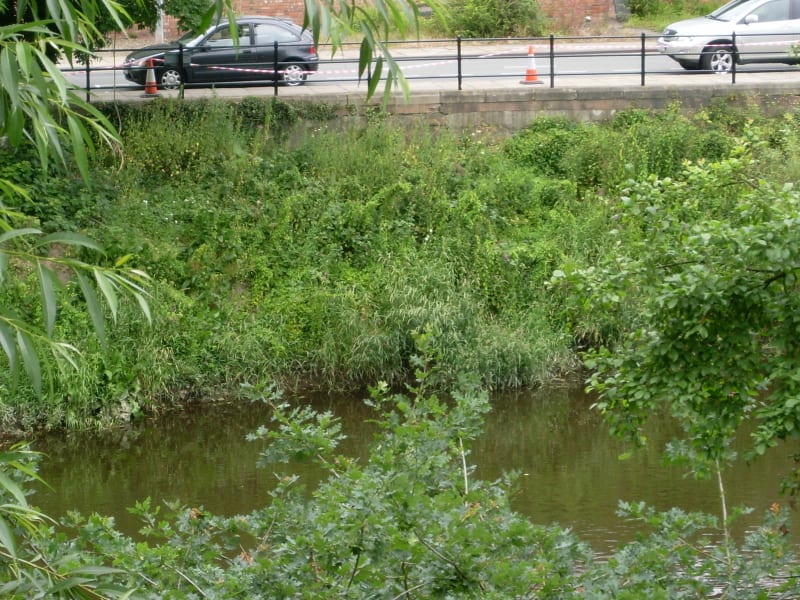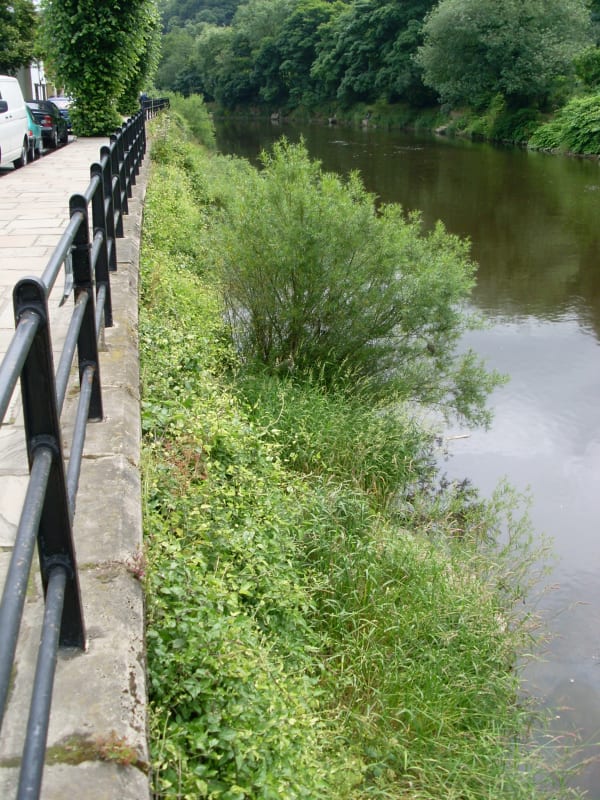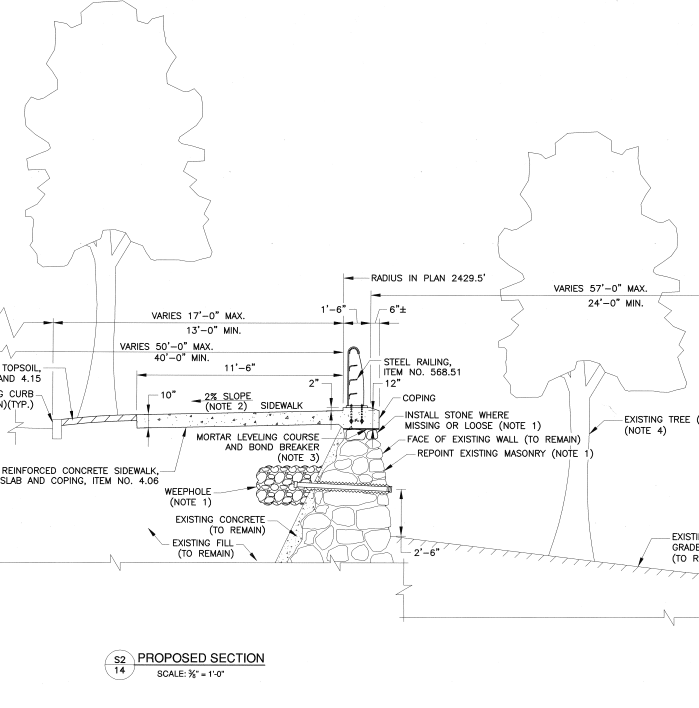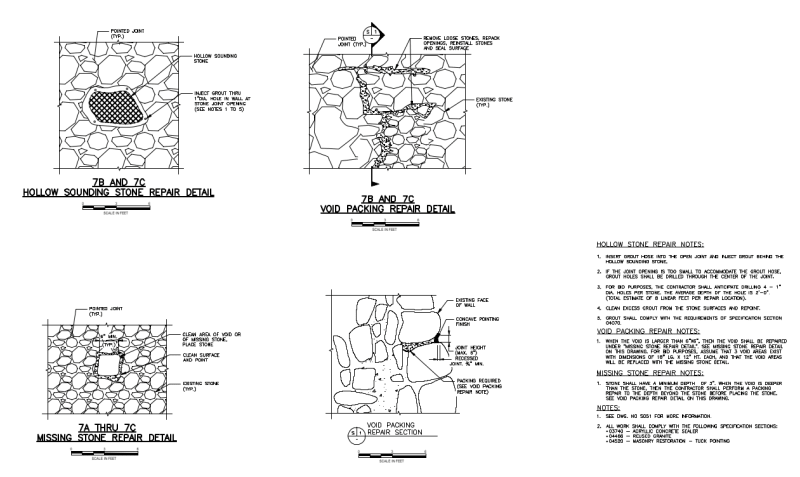Musheir El-Farra
Civil/Environmental
I am designing a parapet replacement for a Cast Iron parapet on top of a grade ii listed stonework retaining wall. The new parapet will be mounted on top of the retaining wall. The wall was constructed in 1780; it's not showing any movement but as expected erosion of mortar joints; few cracks; missing section in some areas etc.
How do I design the foundation? do I design it to take 1.5 Kn/m pedistrian load on top of the parapet ( to TD 19 with factors of safety applied) and check it for Overturning and sliding. This will result in concrete foundation pad under every post which will increase the cost as the numbe rof posts are 120.
Would it be an option to consider coring through the stonework wall (To what depth ???) to insert dowels embeded in eposy resin material or concrete grout then connected to the parapet post foundation. I don't know how to design such an option .
Two photos of the existing parapet on top of the wall is below.
Many thanks
.


How do I design the foundation? do I design it to take 1.5 Kn/m pedistrian load on top of the parapet ( to TD 19 with factors of safety applied) and check it for Overturning and sliding. This will result in concrete foundation pad under every post which will increase the cost as the numbe rof posts are 120.
Would it be an option to consider coring through the stonework wall (To what depth ???) to insert dowels embeded in eposy resin material or concrete grout then connected to the parapet post foundation. I don't know how to design such an option .
Two photos of the existing parapet on top of the wall is below.
Many thanks
.




